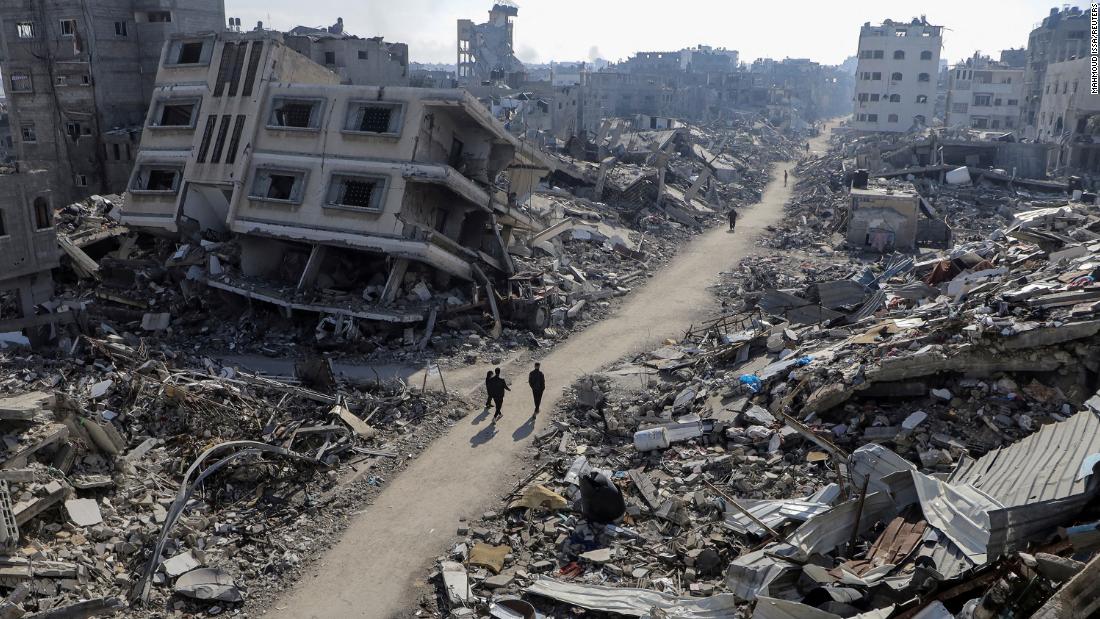A major early-season heat wave is expected to hit much of inland California this week, with highs topping 100 from the Sacramento Valley to the Antelope Valley — dangerously high temperatures that experts say could bring health risks as nighttime cooling will be limited in many areas.
Much of the western U.S. is bracing for the effects of a high-pressure ridge, or heat dome, that will begin warming the region on Tuesday, likely pushing temperatures to near- or record-high levels, with Various excessive heat alerts and warnings. already issued.
In Southern California, the most extreme temperatures are expected Tuesday through Thursday in the inland mountains and deserts, with Wednesday expected to be the hottest.
“It's going to start getting really hot tomorrow,” Joe Sirard, a meteorologist with the National Weather Service, said Monday morning. “Those temperatures in the lower mountains and deserts will be 15 to 17 degrees above normal for this time of year.”
Highs in the Antelope Valley are expected to reach between 103 and 108 degrees on Wednesday and Thursday, while the valleys of Los Angeles County will likely reach a high of around 90 degrees. Statewide, the coast will generally avoid the worst of this heat wave, with Los Angeles beaches remaining in the 70s and 80s this week.
Lancaster and Palmdale are forecast to tie or break daily high temperature records, Sirard said, with record highs reaching 104 degrees in both cities. An excessive heat alert was issued for Wednesday and Thursday across the Antelope Valley and its surrounding foothills, as well as a “dangerously hot conditions” warning for the Apple and Lucerne Valleys, where temperatures can reach as high as 106 degrees. .
National Weather Service officials are focused on the serious and life-threatening health effects of extreme heat, especially for vulnerable populations, such as older people or pregnant women. The weather service reminds residents in these hot spots to stay hydrated, avoid the sun and heat of the day, and use air conditioning.
First important series of the season from Tuesday to Thursday for #SoCal (the warmest day is expected to be Wednesday):
– Warmer conditions in deserts, mountains and inland valleys.
– Interior sections with elevated weather conditions for fires.
– Stay hydrated/check on pets and neighbors#CAwx #LAHeat pic.twitter.com/eqAJo7S1Mc— NWS Los Angeles (@NWSLosAngeles) June 2, 2024
The heat is also expected to cause elevated fire conditions across the state.
Last weekend, the Golden State likely experienced its most fire activity so far this year, with a 14,000-acre fire in San Joaquin County forcing temporary evacuations. Several other small fires broke out across the state, including two vegetation fires in Santa Barbara County and one in Riverside County.
The most extreme heat this week is expected near California's border with Nevada, where an excessive heat warning will be in effect from Wednesday to Friday, with dangerously high temperatures. Forecasters warned of high temperatures reaching 115 degrees around Lake Mead and Lake Havasu City, 114 degrees in Las Vegas and up to 120 degrees in Death Valley.
“As the heat increases day by day, there will be little relief overnight, especially in the Las Vegas Valley and Death Valley National Park,” the warning said.
The excessive heat warning will also be in effect across the Mojave Desert on Wednesday and Thursday, where “dangerous heat conditions” are expected to bring highs between 96 and 106 degrees. In the San Joaquin Valley and lower Sierra Nevada foothills, highs are forecast to reach between 103 and 108 degrees.
In Northern California, the heat wave is expected to arrive even earlier, with heat warnings going into effect Tuesday morning, including in the Sacramento and San Joaquin valleys and the Sierra foothills, where there have been Excessive heat warnings issued. The mercury is forecast to reach between 95 and 108 degrees, and “limited relief overnight, with lows [nighttime] Temperatures between 60 and 70 degrees,” the warning said.
In the inland North and East Bay and in the mountains of Sonoma County, high temperatures are expected to reach nearly 100 degrees on Tuesday, Wednesday and Thursday, with overnight temperatures only to dip into the 60s and 70s, according to the heat advisory issued for that region.
“There is a moderate to high risk for those who are sensitive to heat, especially those without effective cooling or adequate hydration,” the Bay Area National Weather Service warned.
⚠ Heat Advisory in effect Tuesday to Thursday for the North Inland and Easy Bay, Wednesday to Thursday for the South Bay and Central Inland Coast. Maximum temperatures between 90 and 100 degrees and minimum temperatures between 60 and 70 degrees. #CAwx #BayAreaWX pic.twitter.com/CrfRkmfw3f
– NWS Bay Area 🌉 (@NWSBayArea) June 2, 2024
Widespread warming will also increase snowmelt, raising concerns about cold, fast-moving waterways across the state, creating what the weather service warned could be “potentially dangerous conditions for those seeking relief in rivers and lakes.”
The upper-level high-pressure system driving this heat wave is expected to slowly weaken and move east toward the end of the week, Sirard said.
“By Friday, temperatures start to drop a little bit,” Sirard said. “We expect a gradual cooling over the weekend,” with more seasonal temperatures expected on Sunday.












